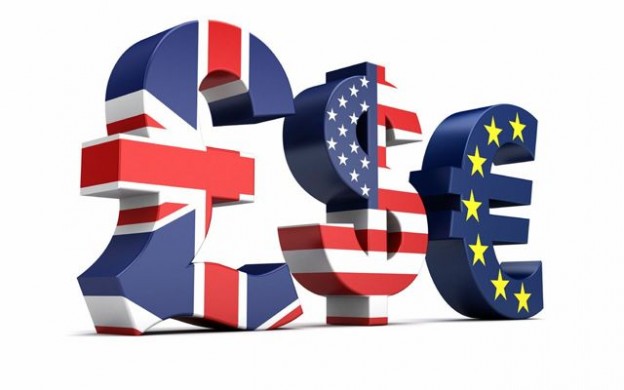Pound Sterling The Pound spent most of the week higher against its major peers and on Monday it continued to ride higher against the US Dollar and Euro thanks to last week’s positive economic data releases. House price data released in the afternoon showed that prices had fallen for the first time in six-months in August. The slightly negative news was counteracted however by the decision by the Confederation of British Industry to increase its growth forecasts for the UK economy, a move that boosted the Pound.

To ask a currency expert a question direct, click HERE
Or to receive a FREE, NO OBLIGATION quote please click HERE
Pound Sterling Continued……. Midweek Sterling was little changed against the US Dollar and Euro as economists awaited the release of a report which was expected to show that the UK’s public finances improved in July. It didn’t. Instead it made a surprise deficit. Despite that the Pound hit a two-week high against the US Dollar after a private sector report showed that UK manufacturing orders hit a two-year high in August, adding to the sense of optimism surrounding the UK’s economic recovery.
On Thursday it weakened against the US Dollar after Federal Reserve officials voiced their support for a cutting of the US Central Banks bond buying programme this year. The currency went on to weaken further after Bank of England policy maker Martin Weale said that the Central Bank may extend its asset purchasing programme.
Sterling received support on Friday after the UK’s GDP data was revised higher after the economy received a boost from increased exports.
US Dollar
The ‘Greenback’ began the week softer against the Euro and Pound as trading was muted ahead of data releases due later in the week.
As the week progressed the currency soared against its Asian rivals as investors awaited the release of the minutes for the Federal Reserve’s July policy meeting. Against the Indian Rupee the Dollar surged to yet another record high and hit a four-year high against the Indonesian Rupiah. Against the Pound it fell to a two-week low.
The ‘Greenback’ strengthened against the Pound following the release of data which showed that the number of workers applying for jobless claims benefits held close to a six-year low. Other positive news for the US economy came from the release of the latest Markit flash manufacturing purchasing managers index which edged higher to 53.9 in August, up from the 53.7 recorded in July, the highest figure in five months.
As the week came to a close the Dollar received a boost against most of its major rivals following the release of data that stoked speculation that the Federal Reserve will begin to taper its quantitative easing programme later in the year.
The Euro
The Euro spent most of the week little changed due to a lack of data releases for the Eurozone. The Euro did make small advances against the US Dollar and Sterling after global stocks fell ahead of the publication of Wednesday’s highly anticipated minutes report for the Federal Reserve’s July policy meeting.
Midweek the currency was holding close to a six-month high against the US Dollar as uncertainty over the timing of a possible tapering by the Federal Reserve continued to dominate market sentiment. The Dollar came under pressure against the single currency as expectations mount that the Fed will begin to loosen its monetary easing programme in September.
As the week came to an end the Euro edged lower against the broadly stronger US Dollar after the minutes of the Federal Reserve’s latest meeting indicated that policymakers remain divided on when to start scaling back the bank’s stimulus program. However, as the afternoon came about the Euro jumped higher due to positive data. According to Markit’s Purchasing Managers Index (PMI) manufacturing activity across the Eurozone came in at 51.3 in August, up from the 50.3 level in July. Activity in the services sector advanced to 51.0 from 49.8 in July. Both readings came in far ahead of the median forecasts of economists.
A figure above 50 indicates an expansion.
Australian Dollar
At the start of the week the ‘Aussie’ rose to a three-week high on speculation that the Reserve Bank of Australia policy meeting minutes for August would signal that the Central Bank is in no hurry to cut interest rates. The currency also found support from a rise in the value of its biggest export, iron ore. As the day wore on the currency lost ground against most of its peers as speculation increased that the US Federal Reserve will cut its monetary easing programme next month.
The ‘Aussie’ then fell for a second day due to the Reserve Bank of Australia saying that the currency’s direction will be important to determining its policy. The RBA policy meeting minutes release showed that another interest rate cut is not imminent. The currency was also affected by the overall downward trend seen by commodity based currencies.
On Thursday the currency rallied against most of its peers after a report showed that China’s manufacturing sector expanded for the first time in four months, boosting Australia’s trade prospects. According to HSBC Holdings Plc and Markit economics the preliminary reading for China’s latest PMI rose to 50.1. Any number above 50 marks an expansion.
New Zealand Dollar
On Monday the ‘Kiwi’ strengthened in early local trading despite the country’s dairy sector being hit by another food scare. New Zealand’s Ministry for Primary Industries revoked the export certificates on four consignments of lactoferrin made by Westland Milk after they were found to contain unacceptable levels of nitrates. Despite that issue the currency rose as economists speculated that Reserve Bank of New Zealand governor Mark Wheeler will announce plans to impose restrictions on the country’s overheating housing market.
Tuesday, the currency tumbled against its peers after Reserve Bank of New Zealand Governor Graeme Wheeler said that the currency is overvalued. Wheeler also said in a speech that restrictions will be placed on bank lending to home buyers with small deposits. The move comes as the Central Bank tries to dampen house price inflation in the country.
On Friday the ‘Kiwi’was heading for a 3.3% weekly fall after the appeal of the local currency dimmed.
Canadian Dollar
The ‘Loonie’ suffered a week of declines as on Monday it declined against its most traded peers after data showed that wholesale sales plummeted by 2.8% in July. The decline was the fastest drop recorded since the beginning of 2009 and beat economist expectations of a decline of just 0.5%.
The currency then fell to a six-week low against its US relation after oil, Canada’s biggest export, slid amid bets that the Federal Reserve will slow the monetary stimulus that has fuelled demand for riskier assets. The ‘Loonie’ fell further after the latest retail sales contracted more than forecast in June, adding to signs that the Canadian economy is slowing down. The decline follows on from reports which showed that manufacturing and wholesale sales also fell.
Do you have a foreign currency requirement?
To ask a currency expert a question direct, click HERE
To receive a FREE, NO OBLIGATION quote please click HERE.
~~~~~~~~~~~~~~~~~~~~~~~~~~~
Any opinions expressed in this document are those of TorFX analysts. Any analysis and/or forecasts provided are aimed at helping clients understand market conditions and developing trends. Clients are wholly responsible for their own trading decisions.


 Hot Features
Hot Features











